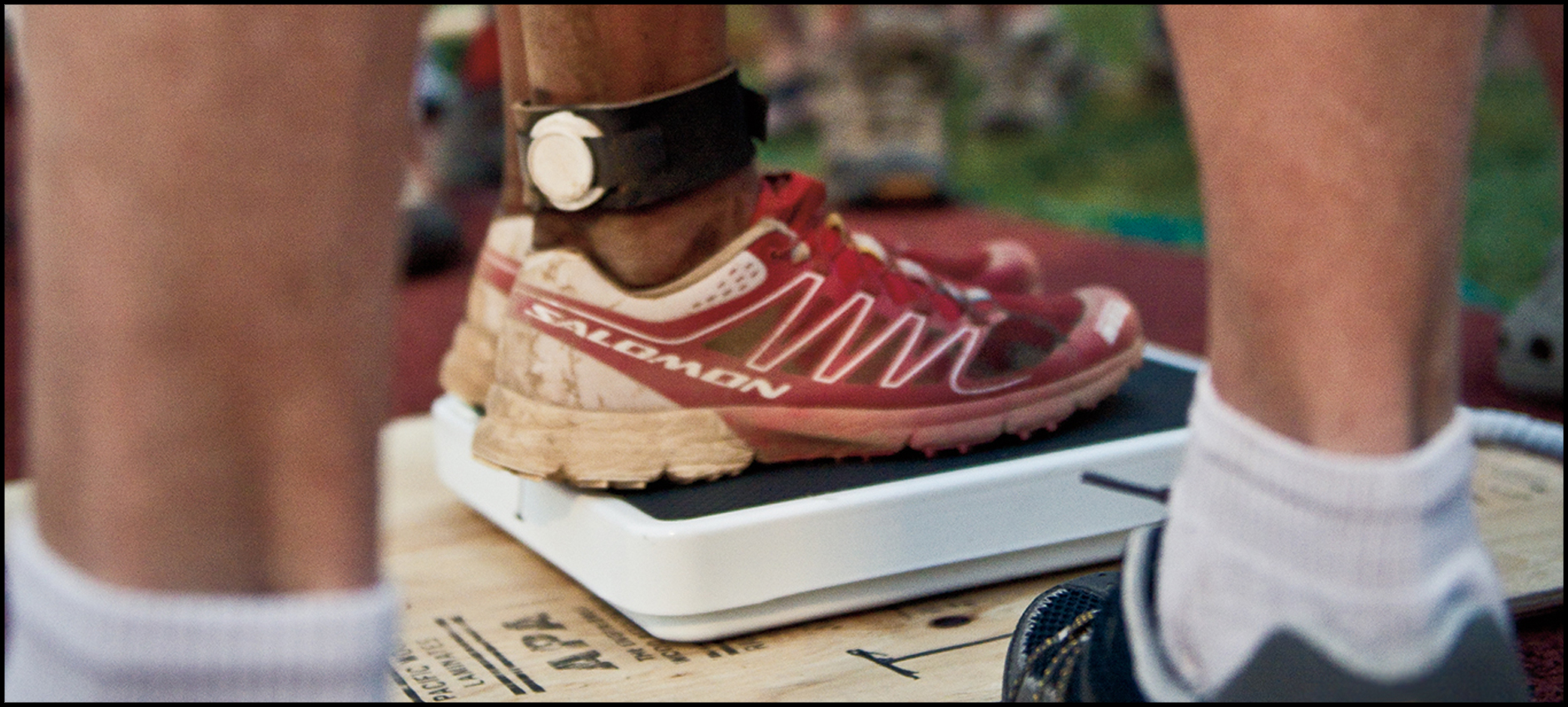To get to the actual beginning of the Salomon Sense story, back to the real source of the tale, we must travel all the way back to 1988. It was then, twenty five years ago, that a couple of seemingly unrelated events occurred that would set the trajectory of two guy’s careers – trajectories that would cross for the first time many years later and result in the creation of a certain bright red mountain-racing shoe, arguably a shoe that has been worn to more mountain and trail race wins than any other that has come before or after.
In 1988, Patrick Leick was a newly graduated mechanical engineer looking to kick-start his career in France. Possessed with a deep passion for skiing and mountaineering he took up a position as a quality technician for the golf company Taylor Made. In those days Taylor Made was owned and operated by Salomon, who at the time was an out and out, industry leading ski brand based in Annecy, the jaw-droppingly stunning lakeside town at the foot of the Alps. At almost the same time that Leick started his long relationship with the brand, high up in the Catalan Pyrenees – at the mountain retreat of Cap del Rec – a little one year old youngster was taking his first tentative steps in life. The young lads name was Kilian Jornet Burgada.
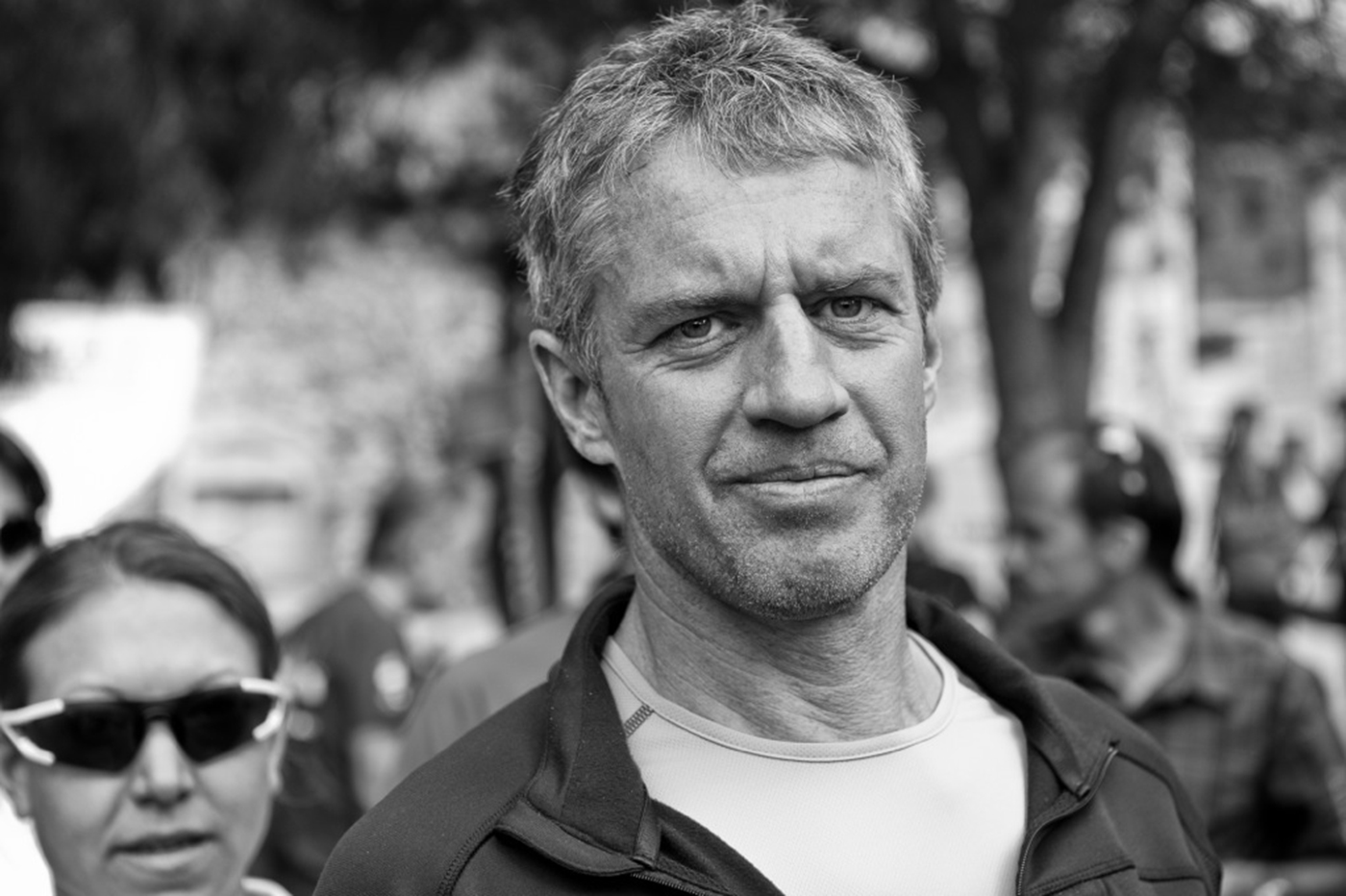 Patrick Leick, Salomon’s footwear maestro. © droz-photo.com
Patrick Leick, Salomon’s footwear maestro. © droz-photo.com
Kilian, as most will know, went from ski-mountaineering prodigy to all-mountain athlete/force of nature – finessing the worlds peaks by ski or by foot as the seasons and conditions dictate. Patrick Leick’s evolution, on the other hand, has been a little more off-the-radar. From his initial position at Taylor Made, he joined the Salomon team as they launched their first hiking boots in 1991/92. It was here that he created a feature that has since graced the majority of Salomon’s footwear and a feature that has become synonymous with the brand; the Quicklace system. Leick remembers the inspiration for the idea well, ‘I was really into motorbikes and I had a pair of motorbike boots that used a very basic form of the lacing system. We were having design problems with a certain nordic-ski boot in the nineties, it was one of the models with a zipped outer boot and it was really difficult to lace up the interior,’ he says. ‘I thought that a similar design to the lace system on the motorbike boot could solve the issue. I designed an improved, spring loaded slider and it worked perfectly. Now we use the system everywhere,’ he adds with a proud smile. From there Leick used his expertise working in multiple, exciting new projects that Salomon launched in the late nineties and the early part of the millennium. He was part of the team that developed Salomon’s inline skates, from there he joined the team that was responsible for ski helmets before taking on his current role as senior product manager of footwear in 2006. A position that came with a big focus on developing racing shoes with the Salomon athletes as part of the S-LAB project.
It was in 2008 that Leick and Jornet’s paths crossed for the very first time – when Kilian was firmly focussed on running his maiden UTMB as a relative unknown in the sport. Even back then, Kilian’s desire for a lightweight shoe was everything, as Leick remembers, ‘When I first met Kilian, in 2008, it was 6 months before the UTMB. At that time he was using the Speedcross as none of the other products in our range was as lightweight.’ So a Speedcross shod Jornet went on to shred the 2008 UTMB, winning in 21 hours, almost one hour ahead of his nearest rival. It was a massive performance and a huge breakthrough for the then 21 year old Catalan. Following the win Kilian’s career skyrocketed and he set about racking up win after win and chopping minutes and hours of various FKT’s (Fastest Known Time) on mountain peaks across the globe. Back in Annecy, Patrick Leick was busy working on a new shoe – the S-LAB XT2.
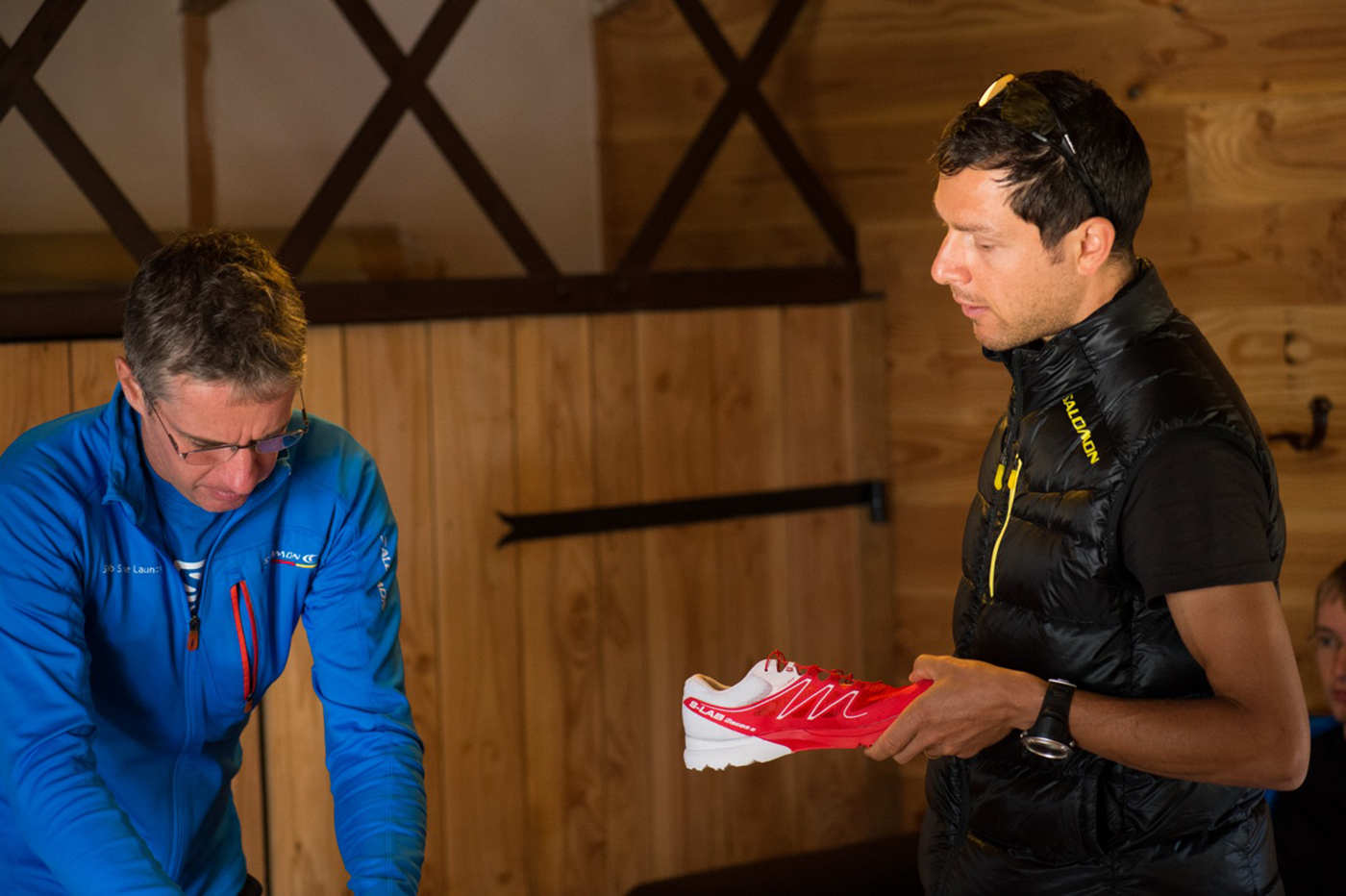 Patrick getting some Sense feedback from Julien Chorier. © droz-photo.com
Patrick getting some Sense feedback from Julien Chorier. © droz-photo.com
The XT2 was based around Salomon’s XT Wing shoe that was released in 2008 and, at the time, was the companies flagship model. The XT2 was a lightweight, race-ready version developed with, and for, the athletes on Salomon’s trail running team. Leick was excited to see what Kilian thought of the new shoe, ‘His answer was: “it’s too heavy!”’ he says with a wry smile, before adding, ‘The shoe was only 300 grams!’ Undeterred, Leick set about working on a prototype with Kilian that took the best of his favourite shoes and combined them – the result was a mishmash custom creation, ‘They were special prototypes for him, an XT S-LAB with a lighter sole unit and Speed Cross outsoles,’ recalls Leick. It was a shoe that Kilian conquered pretty much everything with. Everything, that is, except the Western States 100 miler in 2010.
Greg Vollet, Salomon’s team manager and marketing boss, remembers that day in California very clearly. He was waiting 5km out from the finish line to run the last section with Jornet, ‘I saw Geoff Roes first, running past to win the race. Then came Anton Krupicka, running a great race, then…nothing!’ recalls Vollet laughing. ‘It was so long, the minutes were endless. Then I saw Kilian and had never seen him so fatigued.’ When Kilian finished the race the doctors, too, were worried – Kilian was urinating blood and was extremely dehydrated. After two hours of observation he was allowed to leave the medical tent but not without a little help from Vollet and Leick, who also happened to be there to witness Kilian suffer, ‘We had to carry him back to the hotel and also down to the restaurant for breakfast the next morning.’ says Vollet. All three came away from the experience with a realisation that the race equipment needed to change. It would prove to be the stimulus to create the shoe that would later be christened ‘Sense’. They set to work almost immediately on returning to France.
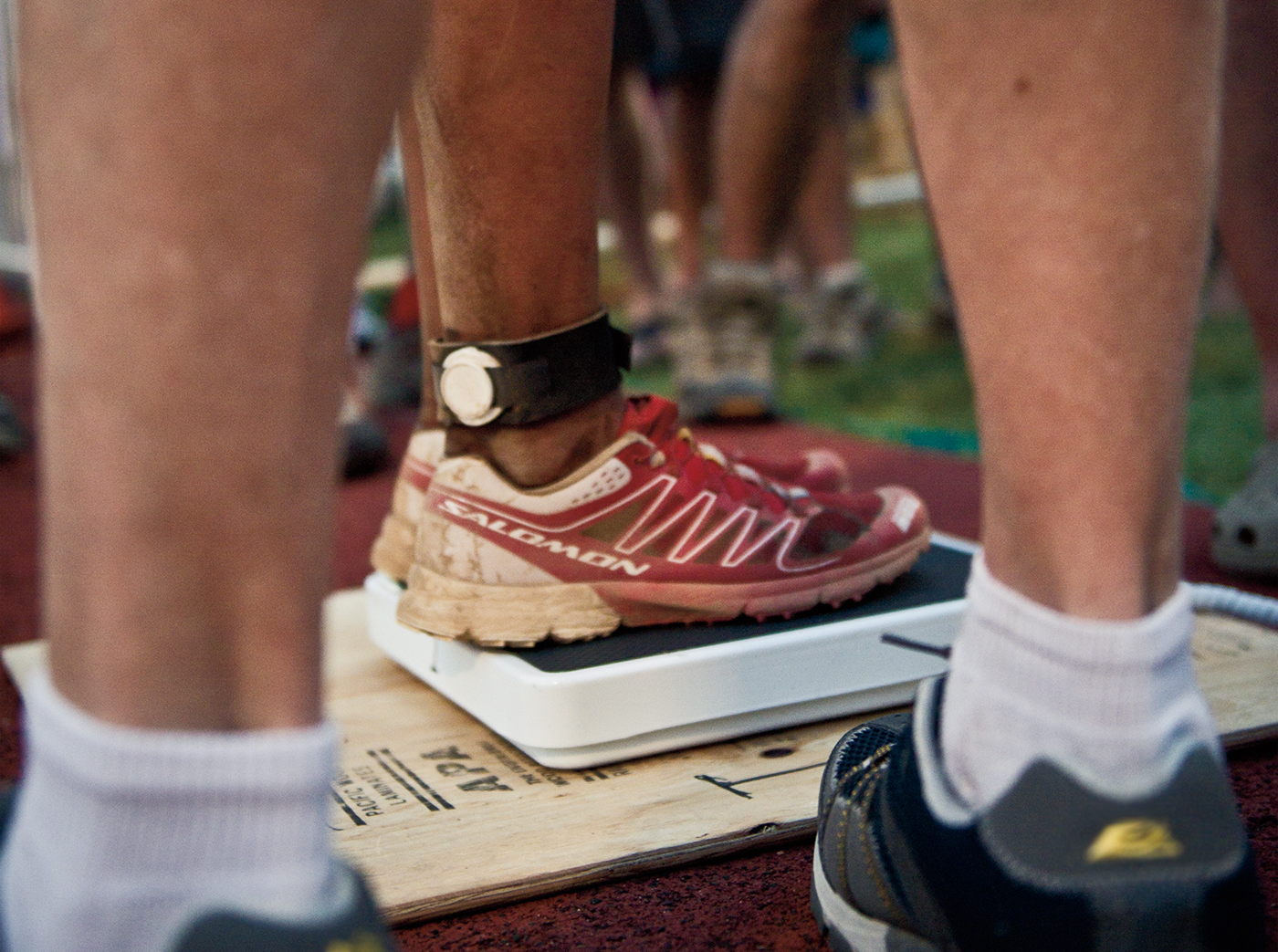 Light & Fast. Kilian, WS100 weigh-in, 2011 © Salomon
Light & Fast. Kilian, WS100 weigh-in, 2011 © Salomon
‘The project was not so difficult, Kilian knows exactly what he wants.’ recalls Leick. ‘The upper of the shoe was really fast to design – as minimalist as possible, with the right level of protection. It was more challenging for the sole unit…almost 40 prototypes were produced,’ he says. The result of all this was the 4mm-drop sole unit that we have today. This turned out to be one of the most difficult decision for the designers and there were prototypes produced with everything from zero to 8mm drops. Kilian, Leick and his team refused to be swayed by market-trends and stuck to their main focus, ‘We were developing a pure racing shoe at that time, the goal was clear – the right weapon for Kilian to win the WS100 2011. The 4mm drop was the best compromise to match Kilian’s needs,’ he says. ‘It was a tough internal discussion – at that time the zero drop trend was very strong. But finally, after biomechanical tests and Kilian’s feedback there was no doubt for us.’ By May 2011 the shoe was 90% complete and ready for Kilian to give them a race outing at the TNF100 in the Blue Mountains of New South Wales, Australia.
Aside from a few blister problems late in the race, the shoe passed with honours – a win and course record for Kilian. Back at the lab, Leick tweaked the lining a little, eliminating the hot-spots, and the shoe that Kilian took back to the States to blaze the Western States in July 2011 was pretty much the finished product. With the win there, Leick and his team set about designing a Sense for the masses and in May 2012 the Salomon Sense was released to salivating mountain and trail runners across the world. The demand was absolutely incredible, ‘What surprised me was the success of the Sense, more than twice the expected quantity the first year!’ The Sense-era had begun.
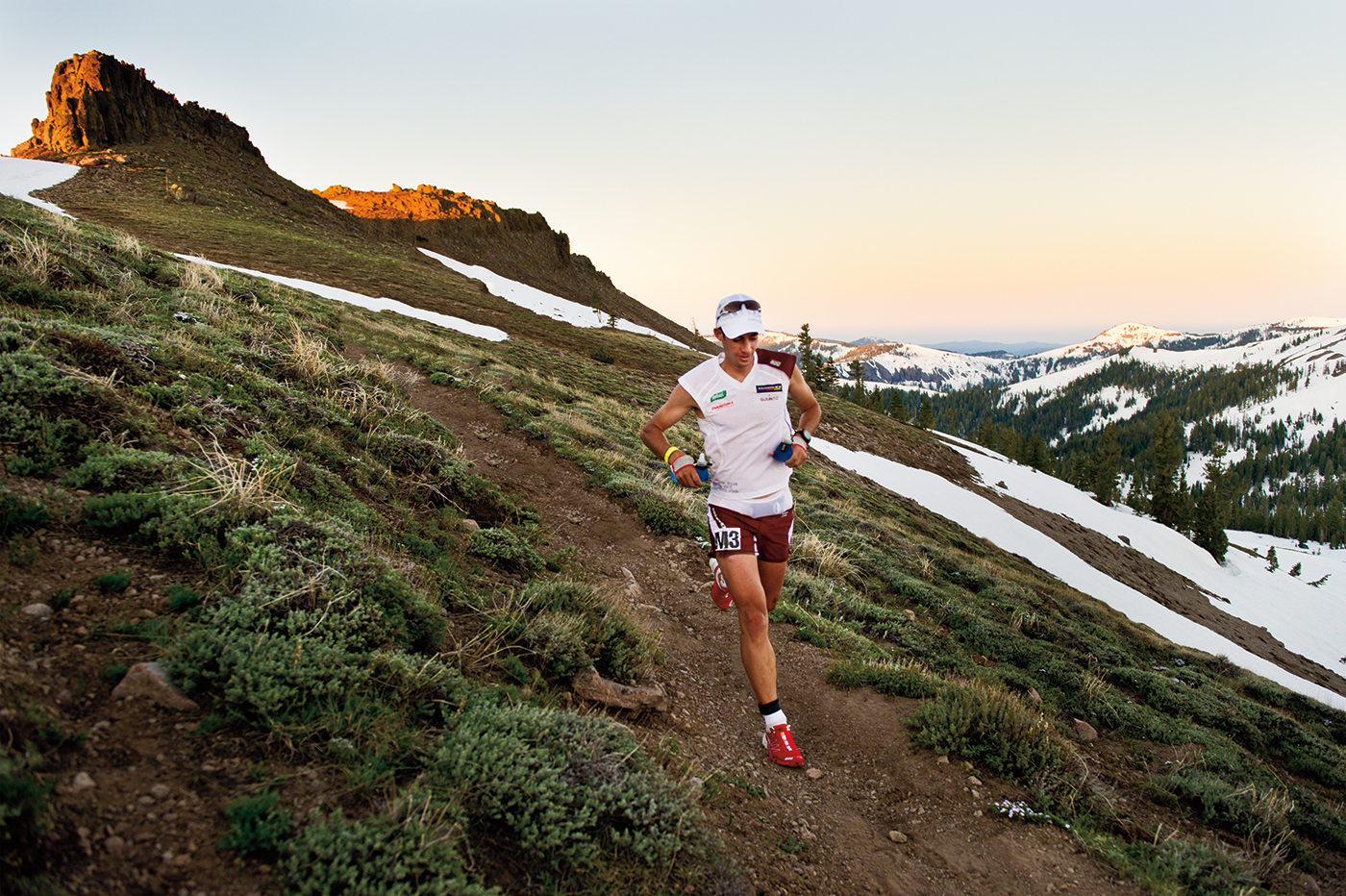 Kilian with some sense prototypes on his way to his WS100 victory in 2011 © Salomon
Kilian with some sense prototypes on his way to his WS100 victory in 2011 © Salomon
Look around at any trail race these days and you’ll see the familiar red uppers beaming back at you. Make no mistake, they’re hot. The verdict on the Sense fit was unanimous – the best fitting trail-shoe ever. This fact in itself created a problem, people simply didn’t want to wear anything else. The Sense was designed for racing, not as an everyday trainer, the result being that some questioned the shoes durability, a reaction that Salomon were expecting and had a solution for, ‘The Sense is a pure racing shoe. The durability is not the number one priority – even if some samples I have on my desk have 1000km without major problems,’ says Leick. ‘The Sense Ultra was on the roadmap from the beginning, to provide the answer for better durability,’ he adds. With the addition of the Ultra version, Salomon created not a Sense-on-steroids or a Sense successor as has been claimed but more a Sense with body-armour – more durable upper, more aggressive outsole and higher density midsole. A Sense Mantra was also released as an everyday trailshoe with some of the features that made the original great, namely a glove-like fit.
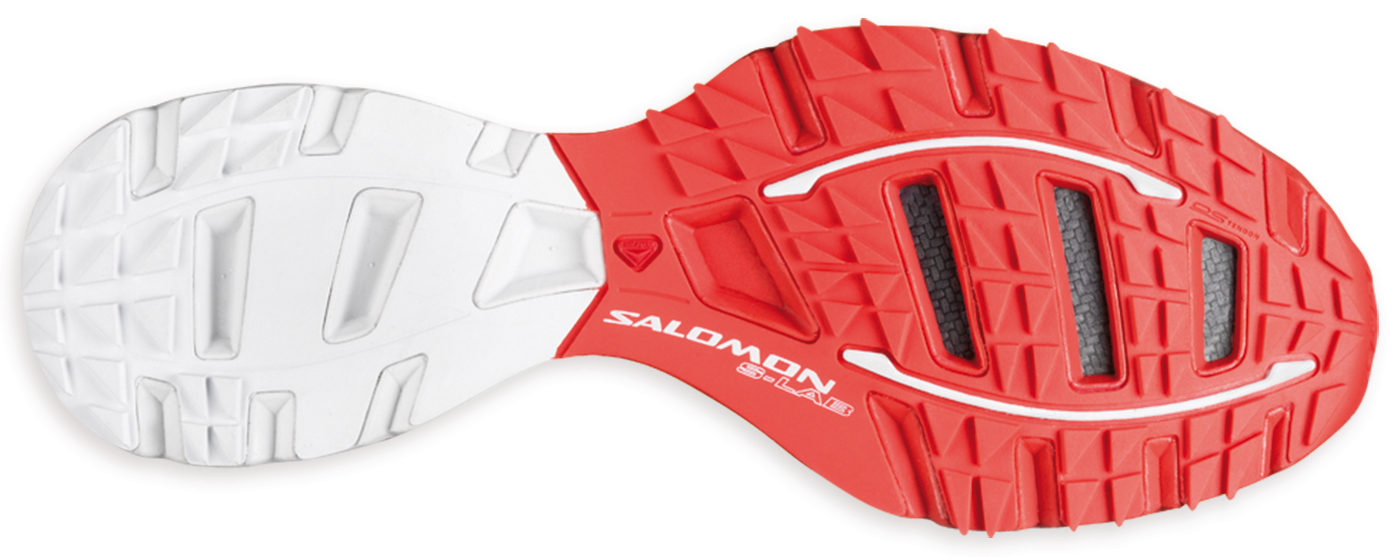 Race Ready. The sleek Sense outsole. © Salomon
Race Ready. The sleek Sense outsole. © Salomon
With the Sense, Salomon have not just created a shoe but rather a whole new philosophy and product segment. The range now includes shoes, hydration and socks – with even more products in the works. It’s only the beginning for the footwear too, this winter sees the release of the Sense 2 shoe – a updated version of the original that sheds even more weight – think refined rather than than redesigned. So what’s in store further afield for the Sense range? Will we get the Sense with Speedcross outsole, so adored by Salomon athletes and so desired by everyone else? Well, I’m sworn to secrecy but Leick does offer a tantalising clue for the next chapter in the story, ‘The evolution of the Sense will naturally give birth to other products, our daily work with the Salomon athletes push us to test a lot of prototypes and find answers to their needs…The Sense 2 is an evolution, check what will come in 2014 – this will answer your question!’ he says with a smile.

